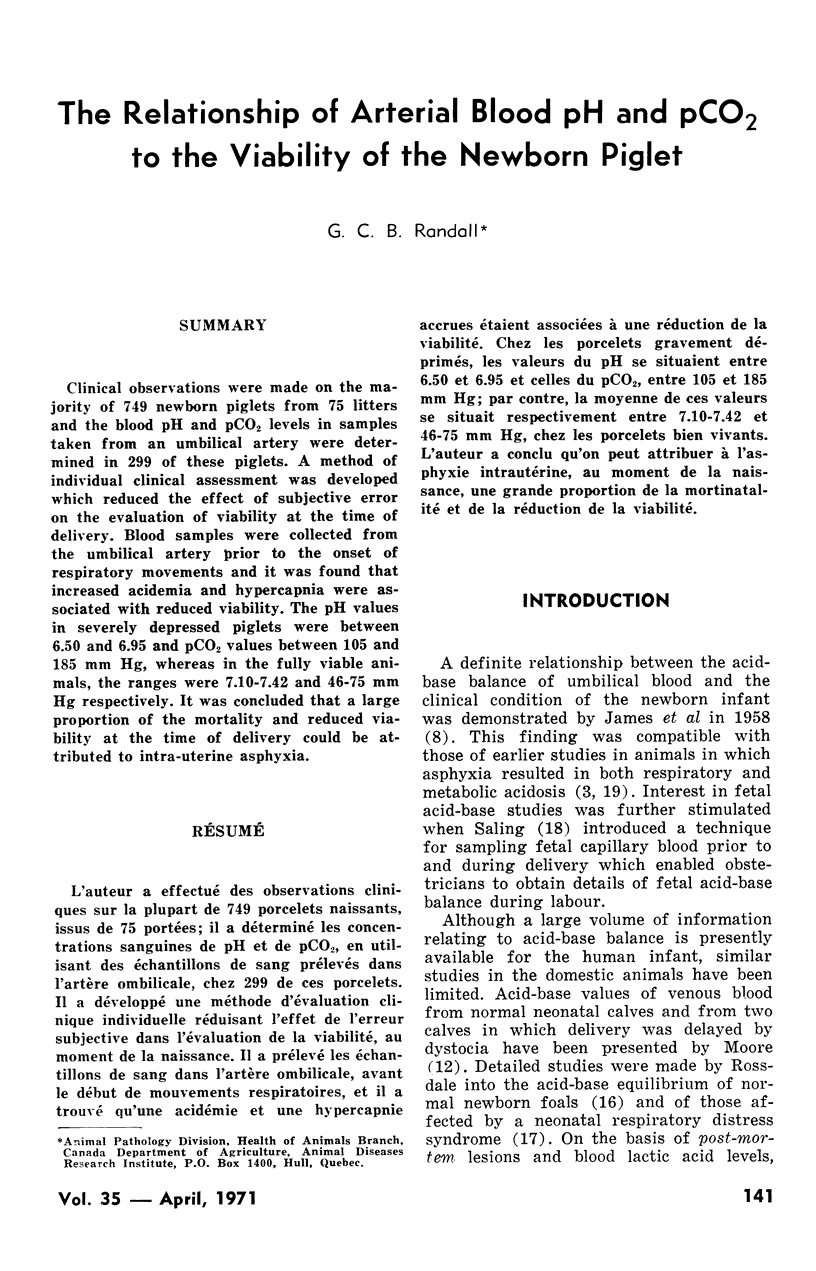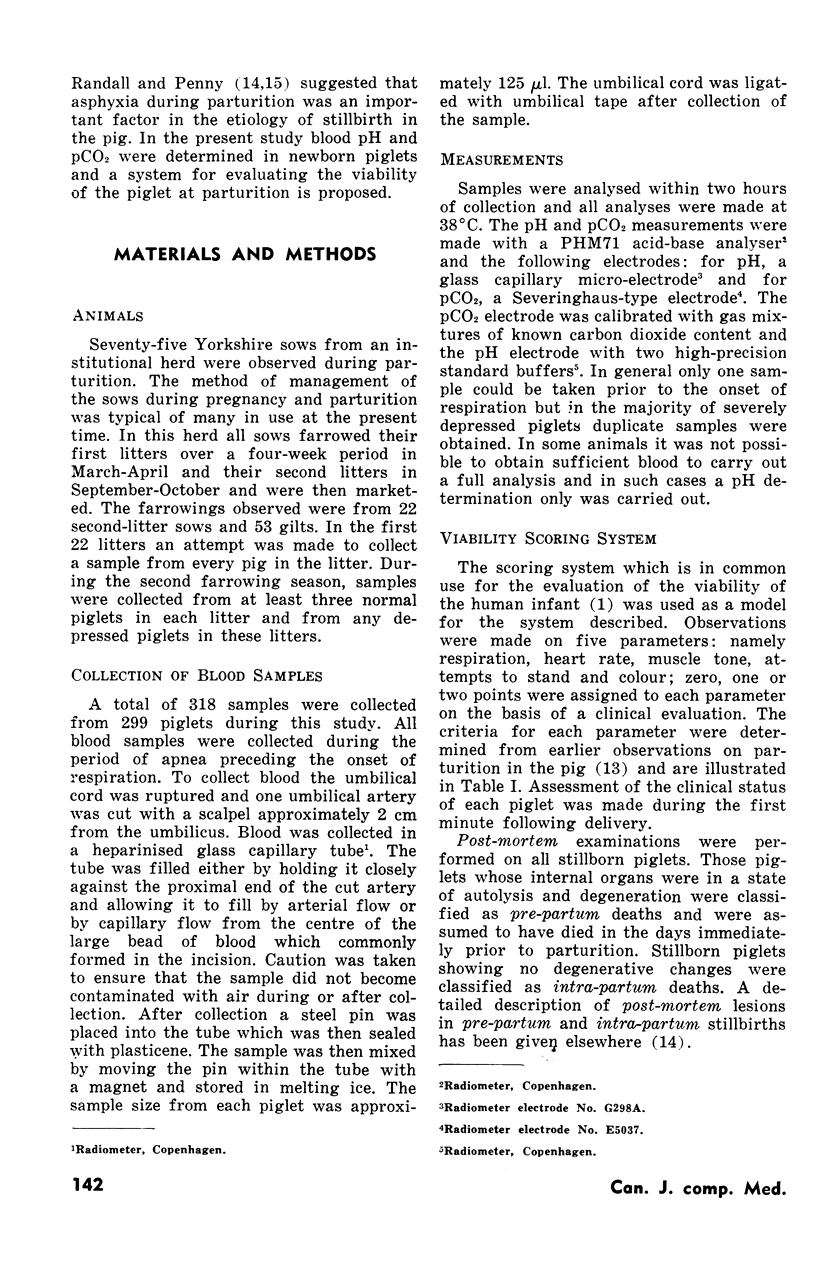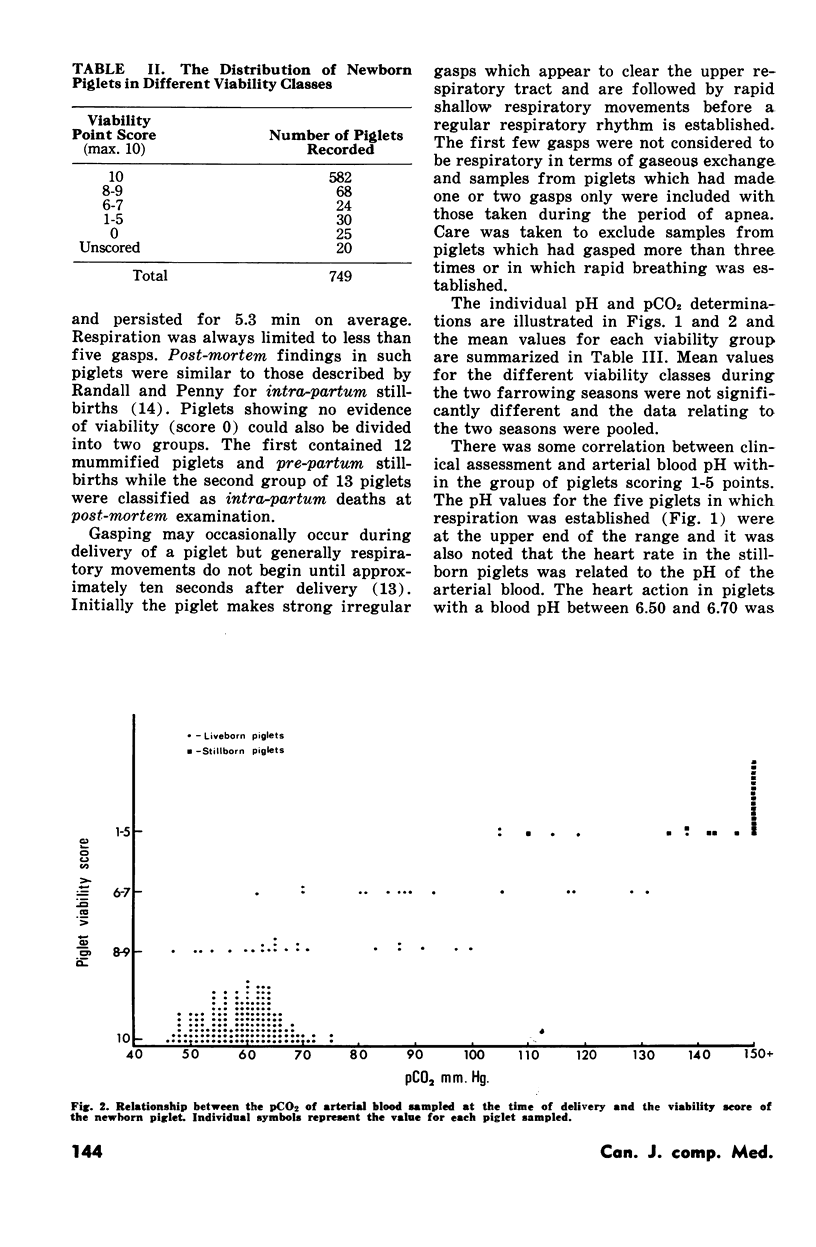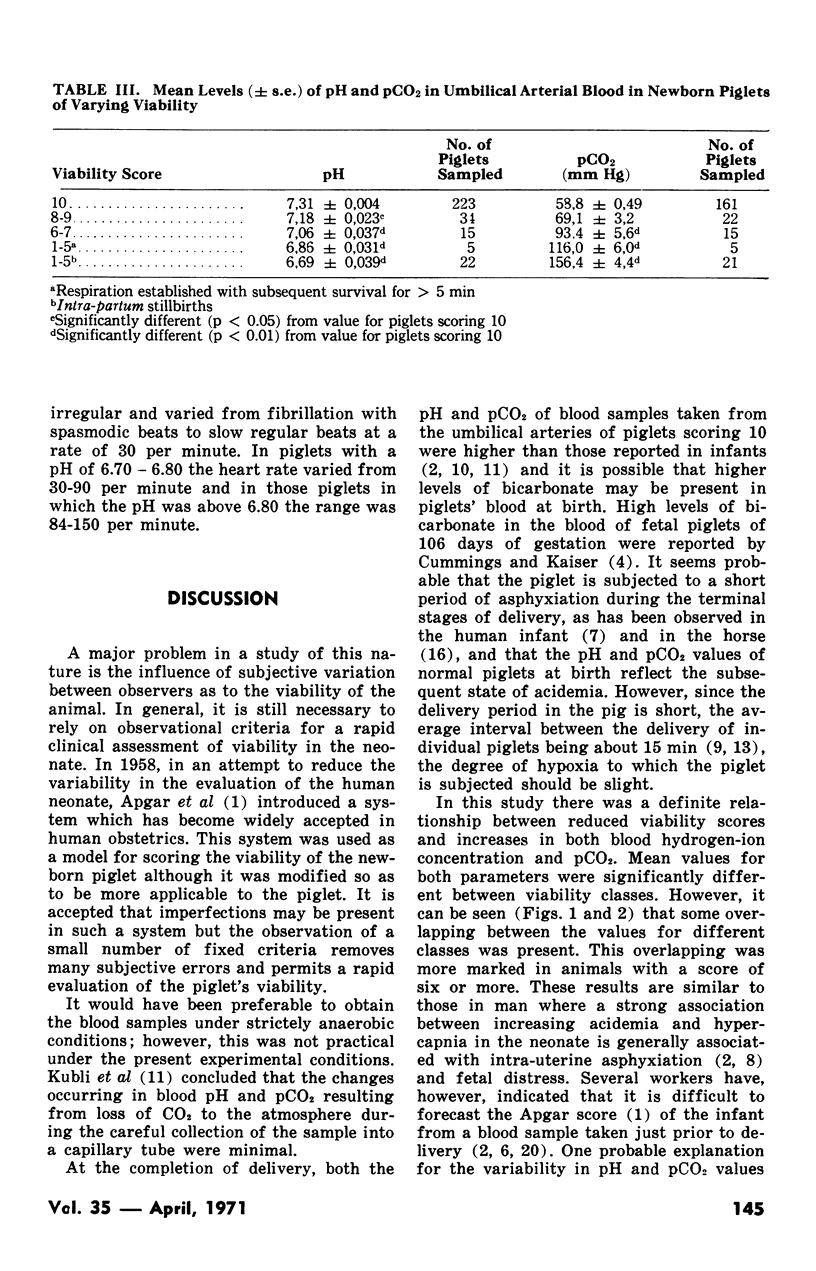Abstract
Clinical observations were made on the majority of 749 newborn piglets from 75 litters and the blood pH and pCO2 levels in samples taken from an umbilical artery were determined in 299 of these piglets. A method of individual clinical assessment was developed which reduced the effect of subjective error on the evaluation of viability at the time of delivery. Blood samples were collected from the umbilical artery prior to the onset of respiratory movements and it was found that increased acidemia and hypercapnia were associated with reduced viability. The pH values in severely depressed piglets were between 6.50 and 6.95 and pCO2 values between 105 and 185 mm Hg, whereas in the fully viable animals, the ranges were 7.10-7.42 and 46-75 mm Hg respectively. It was concluded that a large proportion of the mortality and reduced viability at the time of delivery could be attributed to intra-uterine asphyxia.
Full text
PDF





Selected References
These references are in PubMed. This may not be the complete list of references from this article.
- APGAR V., HOLADAY D. A., JAMES L. S., WEISBROT I. M., BERRIEN C. Evaluation of the newborn infant; second report. J Am Med Assoc. 1958 Dec 13;168(15):1985–1988. doi: 10.1001/jama.1958.03000150027007. [DOI] [PubMed] [Google Scholar]
- Beard R. W., Morris E. D., Clayton S. G. pH of foetal capillary blood as an indicator of the condition of the foetus. J Obstet Gynaecol Br Commonw. 1967 Dec;74(6):812–822. doi: 10.1111/j.1471-0528.1967.tb15562.x. [DOI] [PubMed] [Google Scholar]
- CUMMINGS J. N., KAISER I. H. The blood gases, pH, and plasma electrolytes of the sow and fetal pig at 106 days of pregnancy. Am J Obstet Gynecol. 1959 Jan;77(1):10–17. doi: 10.1016/0002-9378(59)90262-5. [DOI] [PubMed] [Google Scholar]
- DAWES G. S., MOTT J. C., SHELLEY H. J., STAFFORD A. THE PROLONGATION OF SURVIVAL TIME IN ASPHYXIATED IMMATURE FOETAL LAMBS. J Physiol. 1963 Aug;168:43–64. doi: 10.1113/jphysiol.1963.sp007177. [DOI] [PMC free article] [PubMed] [Google Scholar]
- Hon E. H., Khazin A. F., Paul R. H. Biochemical studies of the fetus. II. Fetal pH and apgar scores. Obstet Gynecol. 1969 Feb;33(2):237–255. [PubMed] [Google Scholar]
- JAMES L. S. Acidosis of the newborn and its relation to birth asphyxia. Acta Paediatr Suppl. 1960 Mar;49(Suppl 122):17–28. doi: 10.1111/j.1651-2227.1960.tb05962.x. [DOI] [PubMed] [Google Scholar]
- JAMES L. S., WEISBROT I. M., PRINCE C. E., HOLADAY D. A., APGAR V. The acid-base status of human infants in relation to birth asphyxia and the onset of respiration. J Pediatr. 1958 Apr;52(4):379–394. doi: 10.1016/s0022-3476(58)80058-x. [DOI] [PubMed] [Google Scholar]
- Koch G., Wendel H. Adjustment of arterial blood gases and acid base balance in the normal newborn infant during the first week of life. Biol Neonat. 1968;12(3):136–161. doi: 10.1159/000240100. [DOI] [PubMed] [Google Scholar]
- Moore W. E. Acid-base and electrolyte changes in normal calves during the neonatal period. Am J Vet Res. 1969 Jul;30(7):1133–1138. [PubMed] [Google Scholar]
- Rossdale P. D. Blood gas tensions and pH values in the normal thoroughbred foal at birth and in the following 42h. Biol Neonat. 1968;13(1):18–25. doi: 10.1159/000240129. [DOI] [PubMed] [Google Scholar]
- Rossdale P. D. Clinical studies on 4 newborn throughbred foals suffering from convulsions with special reference to blood gas chemistry and pulmonary ventilation. Res Vet Sci. 1969 May;10(3):279–291. [PubMed] [Google Scholar]
- Wood C., Ferguson R., Leeton J., Newman W., Walker A. Fetal heart rate and acid-base status in the assessment of fetal hypoxia. Am J Obstet Gynecol. 1967 May 1;98(1):62–70. doi: 10.1016/0002-9378(67)90133-0. [DOI] [PubMed] [Google Scholar]


